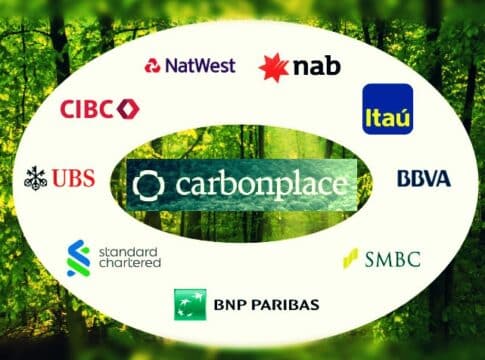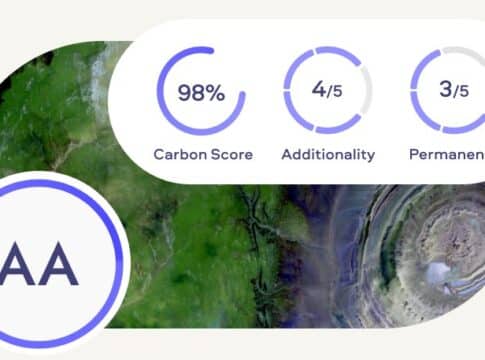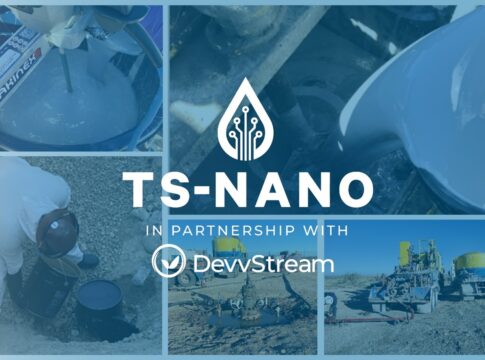Carbon Credit Platform Carbonplace Gets $45M From Large Banks
Nine global banks have invested a sum of $45 million in a new carbon credit platform to help ramp up transactions in the voluntary carbon market (VCM) and give the banks’ clients easier access to the market.
Banks’ $45M Climate Commitment
Demand for carbon offset credits is estimated to grow significantly as businesses are using them to achieve their net zero emissions targets.
Right now, carbon credits change hands bilaterally on a project-by-project basis as well as through exchanges.
Each of the nine banks entrusted $5 million into the carbon credit trading platform Carbonplace. The trading platform will connect buyers and sellers of carbon credits through the banks, namely.
BBVA
BNP Paribas
CIBC
Itaú Unibanco
National Australia Bank
NatWest
Standard Chartered
SMBC
UBS
Their $45 million capital injection shows a commitment to help tackle climate change. Those nine world’s largest bankers represent about $9 trillion in total assets. With their investment, each bank shares equal equity ownership in Carbonplace.
With this technological solution, each bank can now offer its customers committed to decarbonize direct access to carbon credits to offset their footprint.
Carbonplace stated in its statement:
“The capital injection represents a commitment from some of the world’s largest financial institutions… to achieve Carbonplace’s vision of accelerating corporate climate action by providing transparent, secure and accessible carbon markets.”
The Carbonplace Platform
Carbonplace is a trading platform launched in 2021 to connect buyers and sellers of carbon credits through their respective banks. The company received its seed funding from its founding institutions that developed its technology.
Carbonplace’ headquarters is in London under the leadership of its new CEO, Scott Eaton. He’s a financial tech veteran who chaired Nivaura, a capital markets fintech. Eaton described Carbonplace as transforming the way carbon credits are bought, distributed, and held.
The trading network will use the $45m investment to scale up its platform’s infrastructure and grow its team. It will also seek more partnerships with other major market players such as stock exchanges and carbon registries worldwide.
The carbon tech firm said the carbon credits available would be from existing carbon offset standards bodies like Gold Standard and Verra.
Hailed as the “SWIFT of carbon markets”, Carbonplace has done pilot transactions with several buyers, sellers, exchanges, and registries. Some names include the global payments tech giant Visa and Climate Impact X, a carbon marketplace based in Singapore.
In summary, here’s what Carbonplace is all about.
The network is seen as Xpansiv’s new carbon credit rival. It will facilitate the simple, secure, and transparent transfer of certified carbon credits. And that happens in real time.
Digital wallets allow the ownership of a credit to be reliably proven to the market, which lowers the risk of double counting and simplifies transparency.
Driving Corporate Climate Action
Large companies have been setting lofty net zero pledges such as these major airlines, T-Mobile, Disney, Stellantis, Lenovo, and more. Most of them follow the world’s goal to hit net zero emissions by 2050 while others have targets 10 years ahead.
As the number of companies pledging to cut their emissions grows and investor pressure for clear plans intensifies, the importance of voluntary carbon market becomes even more obvious.
A representative from BBVA, Ingo Ramming, commented:
“Carbon markets are a fundamental pillar of our sustainability strategy and an enormous business opportunity… Carbonplace strengthens our value chain. Its modern, flexible, and secure technology will enable carbon markets to realize their full potential to drive large-scale climate action.”
The VCM has a key role in driving corporate climate action and helping companies achieve their net zero goals. Firms buy carbon credits to offset emissions they can’t avoid or reduce.
As per BloombergNEF’ projection, demand for carbon offset credits can grow 40x to 5.2 billion tons of CO2 in 2050. That represents 10% of current global carbon emissions.
Investments in VCM projects grew to $10 billion last year, up from $7 billion in 2021, according to a report. While the volume of carbon credits bought as offsets (155 million) went down 4% from 2021, global supply jumped 2% (255 million).
Carbonplace’ carbon credit platform will be available to the banks’ corporate customers later this year. It can also be open to retail customers in the future, the firm’s chief technology officer says.
The post Carbon Credit Platform Carbonplace Gets $45M From Large Banks appeared first on Carbon Credits.



